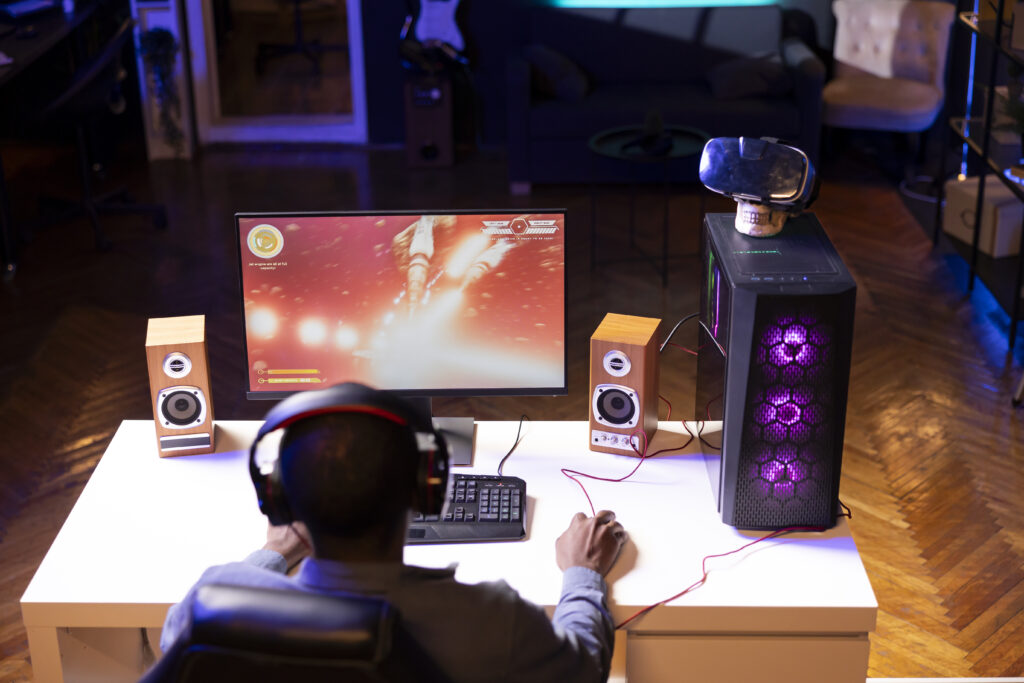From the simple pixelated display we used to find in their early days, today’s industry is quite more sophisticated than it was in those earlier days. This revolution has, over time, unfolded in the hands of brilliant gaming consoles, which, within two decades, have transformed into more challenging machines for most technology and entertainment developers. How were these gadgets brought up to succeed in the evolution process? The article will walk through the journey of this ever-developing gaming console that began from its literal inception to advanced devices shaping the future of gaming.
1. The Origins: The First Generation (1970s)
The first console’s history traces its origins as far back as the very early 1970s, with rather primitive machines that introduced simple games into houses for the first time. A good example would be the Magnavox Odyssey of 1972, which is often credited as being the first commercially sold home video game console. Users could play simple games like “Tennis” though it lacked sound and color.
Not long after that, Atari’s Pong (1975) took this revolution to the entire world and proved some of those things, such as that arcade-style games work and that gaming isn’t this fringe hobby. The first, quite primitive home consoles, though hardwired with relatively few options, were becoming an integral part of modern pastime culture.

2. The Golden Age: Second and Third Generations (1980s)
The 1980s is referred to as the golden age, and emerging technologies were melting together in some of the most iconic consoles in history. The Atari 2600 may have been the poster child of the early days of gaming with interchangeable game cartridges. Only by 1983, however, did the industry hit its first rough patch- a market crash where overstored, low-quality games flooded and disappeared.
In fact, the game crashed from its heights in 1985 with the Nintendo Entertainment System. NES made franchises like Super Mario Bros. and The Legend of Zelda, which, in many ways and for many people, rehabilitated the platform adventure game but more fundamentally brought storytelling into gaming. So, with innovations, the Sega Master System was released in 1986, sparking the competitive fight.
3. Console Wars: Fourth and Fifth Generations (1990s)
The renowned console surfaced in the 1990s when the greatest companies wrestled for commercial supremacy. Nintendo and Sega were locked in a market share battle, and their competitor, Sega Genesis 1988, challenged NES’s successor, Super Nintendo Entertainment System (SNES) 1990, which brought about great franchises like Sonic the Hedgehog and Donkey Kong Country, portraying alternative experiences that consoles can present.
The mid-90s marked the turn from 2D to 3D gaming. Sony developed the PlayStation (1994), including CD-ROMs that increased the file size of games and graphics in comparable jumps to those of Final Fantasy VII and Resident Evil, which expressed some of their great storytelling capabilities. In 1996, Nintendo 64 came out with an analog stick and four-player multiplayer capabilities to cement Nintendo as the leader in the world of gameplay.

4. Online and Multimedia Integration: Sixth Generation (2000’s)
The early 2000s marked a great leap in the history of gaming consoles since these were only just starting to adopt connecting to the Internet and providing multimedia capabilities. In fact, the best-selling console to date is Sony’s PlayStation 2, designed in 2000. While boasting an enormous library of games, it could also play DVDs and, therefore, the ultimate multimedia.
Microsoft jumped into the fray with Xbox (2001), which featured an internal hard drive, not to mention a required Ethernet port to lay the foundation of Xbox Live, one of the first genuine successes in the realm of online gaming networks. Nintendo’s GameCube, meanwhile, lingered far behind its siblings but continued to evolve with some weirdly wonderful titles for all, including Super Smash Bros. Melee and Animal Crossing.
The franchises Halo, God of War, and Grand Theft Auto took center stage in this era of vast open-world gameplay and even defined the narrative value of the medium.
5. HD Era and Motion Controls: Seventh Generation (2006-2013)
This seventh generation pushed the graphical fidelity to unprecedented heights and experimented with motion controls. Sony PlayStation 3 broke like waves in 2006, and Xbox 360 was released in 2005. It was noticed that within those consoles, HD graphics required High Definition, which led to a very realistic and awe-inspiring game that can be quite much like Uncharted and Gears of War. Digital storefronts became, therefore, popularized, wherein downloading games directly on the device became possible.
One of the biggest surprises of this generation was Nintendo’s Wii (2006), which placed motion controls before graphical muscle. Games like Wii Sports attracted a far wider audience than just gamers and were also cultural. The Wii proved inventive gameplay will always outmuscle specs; it did change the current gaming landscape.
6. Streaming and Virtual Reality: The Eighth Generation (2013-2020)
Eighth Generation-Moving to Digital, First Streaming The eighth generation started transitioning into digital and paved the way for streaming. With PS4 and Xbox One in 2013, its strengths in hardware impress with even titles like “The Last of Us Part II” and “Red Dead Redemption 2”. Consoles became dominated by the ‘theme’ of online multiplayer, and services like PlayStation Plus and Xbox Game Pass clung to it.
Virtual reality also came to PlayStation VR to make the experience immersive and full of gaming for the players. Nintendo Switch launched simultaneously with a new hybrid design: to play at home and to play on the go. Hybrid is coming in conjunction with titles like The Legend of Zelda: Breath of the Wild, with which Switch managed to carve a unique space in the market.
Cloud gaming was also starting to emerge as a trend with this generation. Offering on-demand services using Google Stadia and NVIDIA GeForce Now, it allowed for the streaming of games without a console. Of course, these services have been panned, but in that regard, they seemed to mainstream the industry toward on-demand gaming.
7. The Present and Future: Ninth Generation and Beyond (2020s)
This generation now includes new hardware—PlayStation 5 and Xbox Series X|, released in 2020. Far from photorealism-imagined industry pros, these consoles bring ray tracing, super-fast loading via solid-state drives, and new AI capabilities to enhance the drama—three bedrocks of most current video games. Sony and Microsoft are also expanding subscription services, like Game Pass Ultimate and PlayStation Now, to make gaming accessible.
However, the clouds have already started booming: Xbox Cloud Gaming and Amazon Luna have begun their journey as platforms that take the quality of access to games across a multi-diverse device spectrum. Virtual and augmented reality will also increase in their markets, with even Meta (formerly Oculus) and Sony pumping a lot of money into the space.
Looking ahead, artificial intelligence in gaming design, blockchain-based gaming, and the metaverse are so unique they would indeed herald their futures. These advances, therefore, imply that game machines will someday be more than just pieces of hardware but gateways to engaging connected worlds.
The history of game consoles has come a long way, from innovative ideas to tough competition and changes in trends. From the very simplest, most pixelated games to breathtakingly beautiful and full of life, hyper-realistic experiences of today, the words ‘console’ keep on redefining the game landscape. Moving toward cloud gaming, virtual reality, and AI-driven experiences, it’s almost obvious that where the future of the medium will really start taking shape is by either immersing themselves into gameplay, innovative hardware, or having seamless online services through which one can directly play-a new, inclusive, entertainment- and gaming-model gaming console will find itself leading rather than being led on how to play and be connected to virtual worlds.


